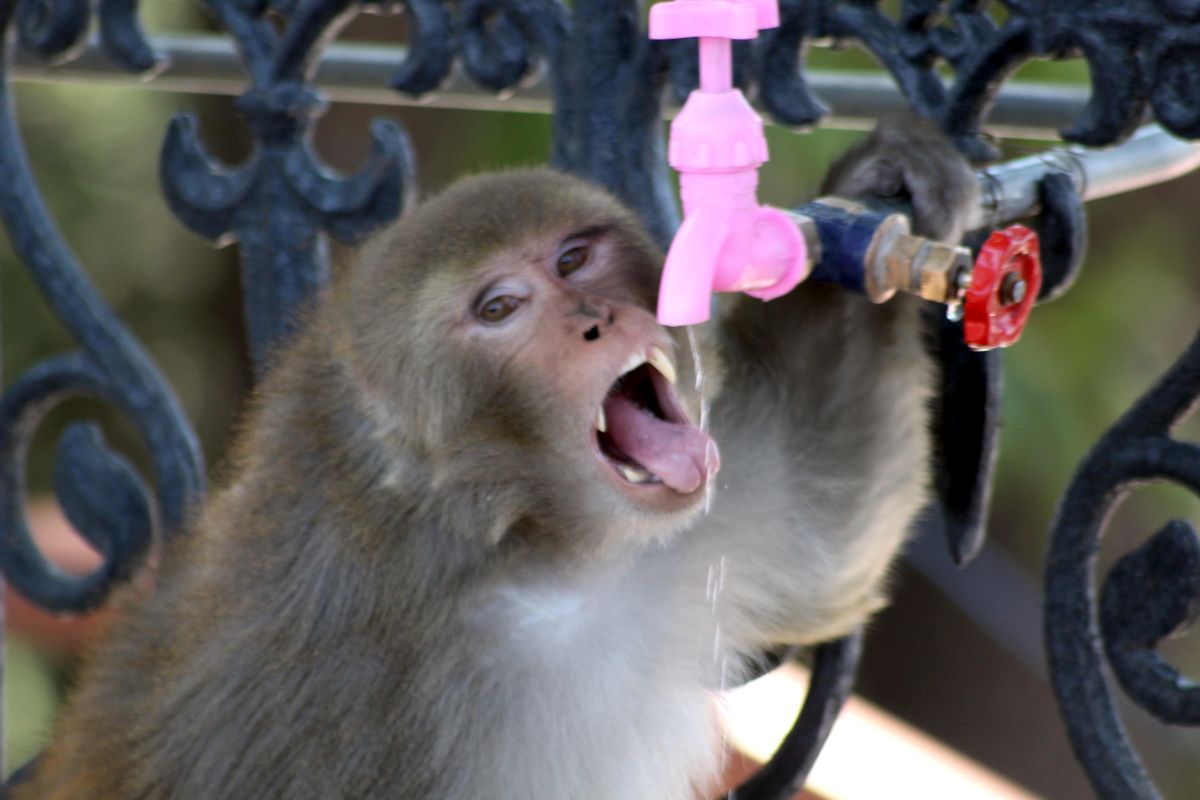What the wild life wing of Himachal Pradesh could not accomplish all these years, the ‘lockdown’ over Covid-19 outbreak has done in just few days! With humans stuck in homes and market closed, the marauding monkeys have deserted Shimla streets in huge numbers over last week and are back to jungle in search of food.
While groups of monkeys could be seen in this capital town of Himachal Pradesh in routine, ever since the state government declared lockdown followed by curfew on 23-24 March, only few of them are seen roaming in Shimla. Even Jakhu Hill- which has always been the favourite joint of monkeys as it houses famous Hanuman temple- is sans the wild animal for past some days.
Advertisement
The wild life experts say the reason of this ‘lockdown effect’’ on monkeys is quite obvious.
The monkeys are unable to find food in the town as their main source- Shops, restaurants, hotels and even the temples are closed and no humans, locals and tourists, are on the streets to feed them. The wild animals have since moved to the villages or forest areas outside Shimla, where they can feed on natural greens.
“Most of the monkeys have left Shimla in search of food and they may be feeding on the fresh shoots in forest area around. Only some dominant ones among them are still seen in town,” said Dr Sandeep Rattan, a senior veterinarian, Assistant Director in the wild life wing of Forest department in Himachal Pradesh.
The forest department, which has been planting 30 per cent fruit trees of the total plantation in state every year, to make the wild animal return to forests has not been able to achieve the task so far.
“This could be a ‘blessing in disguise’ for us or just a temporary phenomenon, as the monkeys in Shimla, who have now developed a taste for junk food may be back once it normalizes,” observed some locals.
The human-monkey conflict has been on the rise in Himachal Pradesh over the last two decades and monkeys have been damaging the agriculture and horticulture crops in rural areas, causing huge losses to farmers.
In Shimla Municipal Corporation area, however, the monkeys have turned a nuisance as they routinely attack locals and tourists to snatch eatables from them in areas as posh as that The Mall. The monkey bite cases in Shimla hospitals are around 2000 in a year. The number of monkeys in Shimla municipality is 1638 at present.
The ‘monkey menace’ is one of the key issues of concern in the state and monkey census is almost a regular feature in HP, with the state government making consistent efforts for controlling population of the wild animal.
According to a recent survey by Salim Ali Center for Ornithology and Natural History (SACON) Coimbatore, Tamil Nadu with state’s wild life wing, the monkey populace dropped by 33.5 per cent in last five years. The monkey population in Himachal now is 1,36,443 compared to the figure of 2,05,167 in 2015.
The number of monkeys in the baseline survey in Himachal in 2003-04 was 3.17 lakh.
Two major steps that the governments have taken so far in HP to control monkey population is sterilization ( since 2007) and the notification declaring monkeys as vermin in 91 Tehsils/Sub Tehsils in Himachal and Shimla Municipal area doing previous Congress government.
